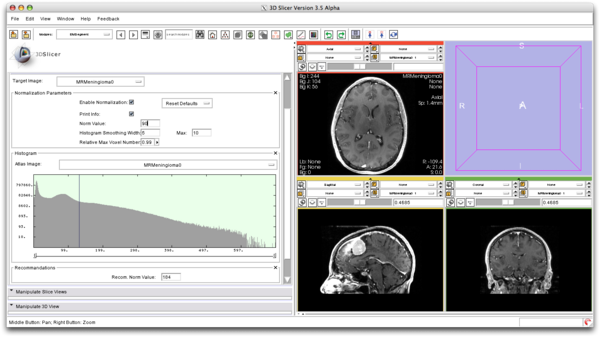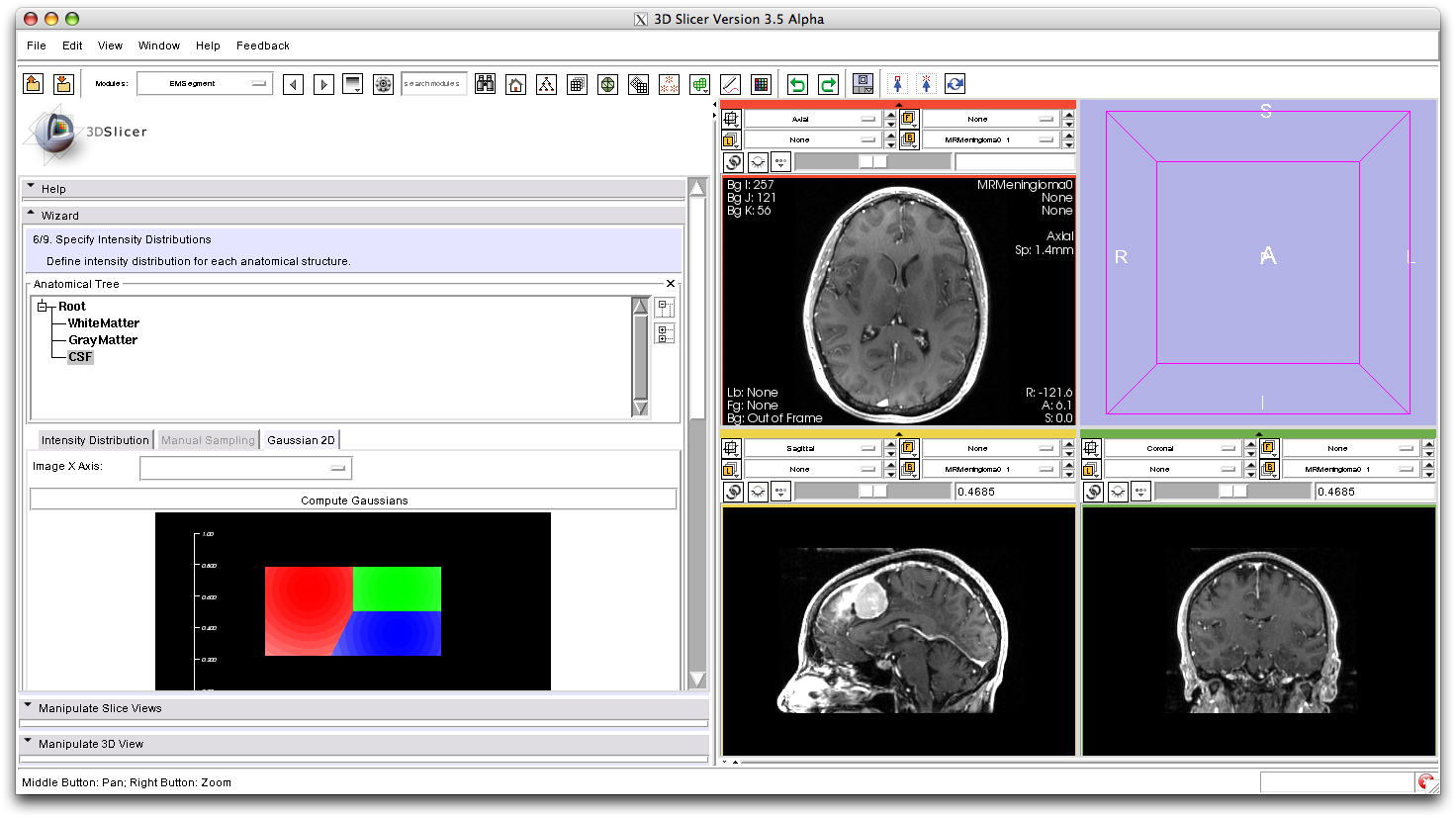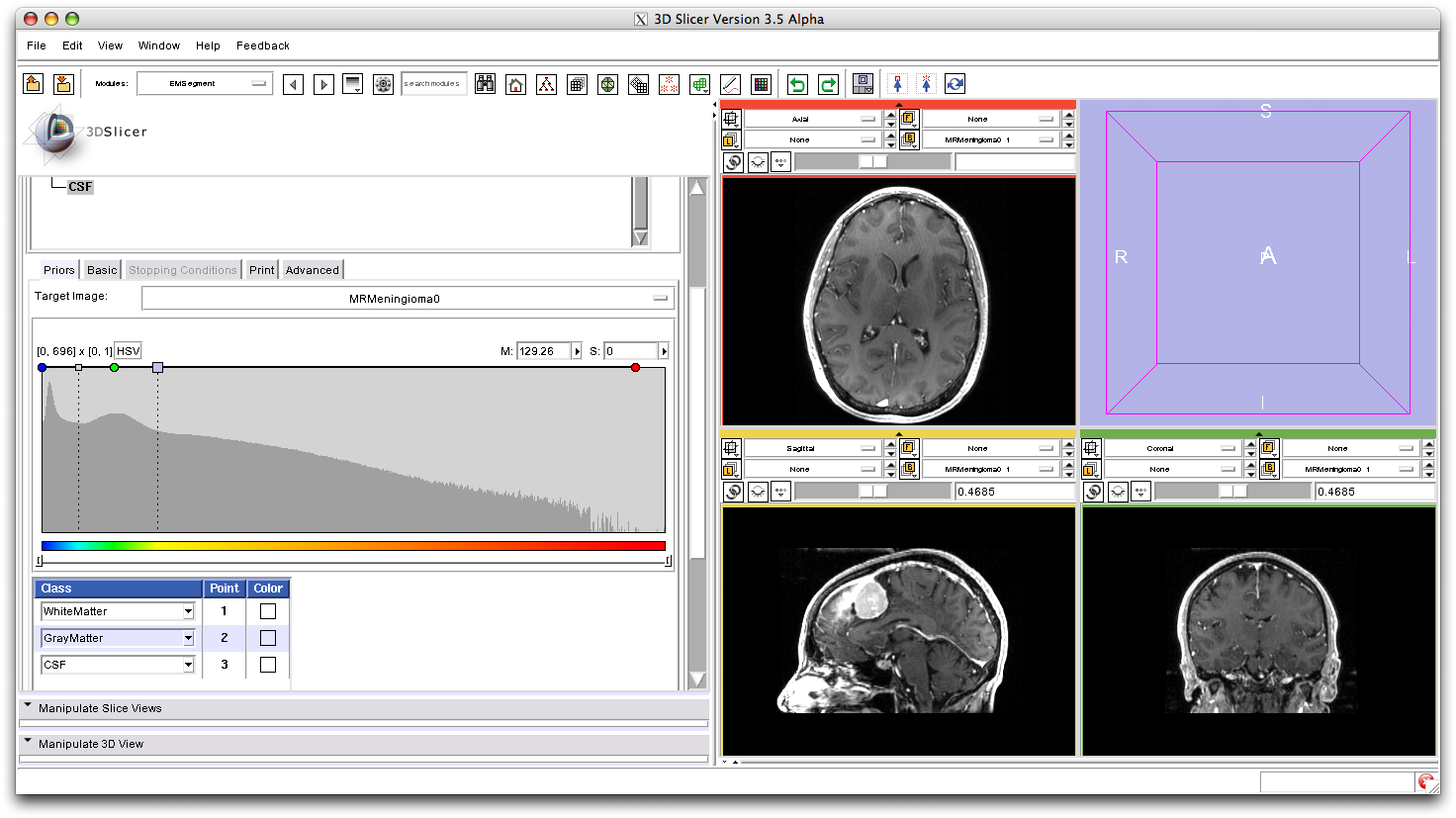Difference between revisions of "EMSegment"
Sylvainjaume (talk | contribs) (→Collaboration: Progress update at the end of NA-MIC Programming Week) |
Sylvainjaume (talk | contribs) |
||
| Line 45: | Line 45: | ||
We compute the normalization parameter for the atlas based on the value selected by the user. | We compute the normalization parameter for the atlas based on the value selected by the user. | ||
| − | [[File:EMSegment_Intensity_Normalization.png]] | + | [[File:EMSegment_Intensity_Normalization.png|600px]] |
| + | |||
===Intensity Distribution Visualization=== | ===Intensity Distribution Visualization=== | ||
We model the image intensities using a Gaussian distribution for every class. | We model the image intensities using a Gaussian distribution for every class. | ||
Revision as of 00:28, 26 June 2009
Home < EMSegmentKey Investigators
- Sylvain Jaume, Polina Golland (MIT Computer Science and Artificial Intelligence Laboratory)
- Nicolas Rannou, Steve Pieper, Ron Kikinis (Harvard Medical School, Brigham and Women's Hospital)
- Koen Van Leemput (Harvard Medical School, Massachusetts General Hospital)
Objective
The goal of the EMSegment project is to create a segmentation module in Slicer3 that offers a high productivity and reliability to the clinician. The targeted application is the segmentation of MRI images of the brain. The EMSegment module allows the segmentation of other anatomical regions as long as a statistical atlas is available.
Approach, Plan
Our algorithm builds upon the Expectation Maximization theory and is structured to let the clinician make the most efficient use of his/her anatomical knowledge. Because of our intuitive visualization of probabilities, the user can understand the probabilistic features of his/her data and can efficiently tune the parameters to obtain the most accurate segmentation. To meet the time constraints of the tasks in a hospital, a main focus has been devoted to the acceleration of the EM segmentation algorithm.
Progress
The EMSegment module is under active development and will be available in Slicer 3.5. A first achievement of this project is the completion of a Slicer3 module for MRI Bias Field Correction. The MRIBiasFieldCorrection module is currently tested for the study of alcohol and stress interaction in primates.
New Features
Intensity Normalization
We compute the normalization parameter for the atlas based on the value selected by the user.
Intensity Distribution Visualization
We model the image intensities using a Gaussian distribution for every class.
Global Prior Visualization
We compute the Global Priors based on the selection in the intensity histogram.
Collaboration
- Bayesian Segmentation of MRI Images by Koen Van Leemput, Sylvain Jaume, Polina Golland, Steve Pieper and Ron Kikinis.
- NA-MIC NCBC Collaboration: Measuring Alcohol and Stress Interaction by Vidya Rajagopalan, Andriy Fedorov and Chris Wyatt.



